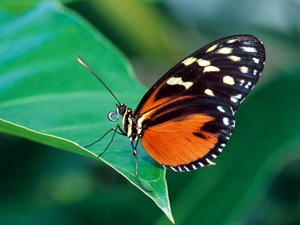 |
|
“Research of this nature is critical to assessing the broader effects of weather on an ever-changing Eart |
The number of Mormon fritillary butterflies in the Colorado Rocky Mountains is on the decline due to earlier spring weather, according to researchers.
The region’s early snowmelt is driving down the population of the butterflies by reducing their favored nectar supply and killing off caterpillars that die during early-season frosts.
Stanford University researchers found that early snowmelt for two consecutive years explained more than four-fifths of the observed variation in population growth rate, according to a study recently published in the journal Ecology Letters.
“We already can predict that this coming summer will be difficult for the butterflies, because the very low snowpack in the mountains this winter makes it likely that there will an early snowmelt and significant frost damage,” said biology professor Carol Boggs, lead author of the study.
Boggs says the blow to the butterfly population can be explained by looking at the insect’s lifecycle and the factors determining egg production.
“This suggests that predicting effects of climate change on organisms’ population sizes will be difficult in some cases due to lack of knowledge of the species’ biology,” Boggs said.
Butterflies lay eggs and then die in the first summer. The eggs become caterpillars that overwinter without eating and develop into adults in the second summer.
Laboratory experiments showed that the amount of nectar a female eats determines the number of eggs she will lay, suggesting that flower availability per female might be important to changes in population size.
To test this hypothesis, researchers at the Rocky Mountain Biological Laboratory (RMBL) in Crested Butte, Colo., collected long-term data on the Mormon fritillary, or Speyeria mormonia, a common North American butterfly.
The data revealed multiple effects of a single weather event—snowmelt—on the size of the butterfly population.
Early snowmelt in the first year reduced the availability of the insect’s preferred flower species, because the flowers budded too soon and were killed by early-season frosts. Fewer flowers meant reduced nectar availability for each butterfly, which adversely affected the overall population growth rate.
Early snowmelt in the second year of the butterfly’s lifecycle worsened the impact, probably because a number of caterpillars died during early-season frosts, according to the researchers.
“It is very unusual for research to uncover such a simple mechanism that can explain almost all of the variation in growth rate of an insect population,” said David Inouye, professor of biology at the University of Maryland and co-author of the study.
“Earlier studies have shown that a single climate variable can have multiple effects on an organism’s population growth,” said Boggs, the Bing Director of the Program in Human Biology at Stanford. “However, this was not previously recognized for species such as butterflies that live for only one year. ”
Inouye says long-term studies are important to understanding the “ecology of place” and the effects of weather and possible climate change on population numbers.
“Research of this nature is critical to assessing the broader effects of weather on an ever-changing Earth,” he said.
The National Science Foundation and Stanford’s Vice Provost for Undergraduate Education provided primary funding for the stud

|


